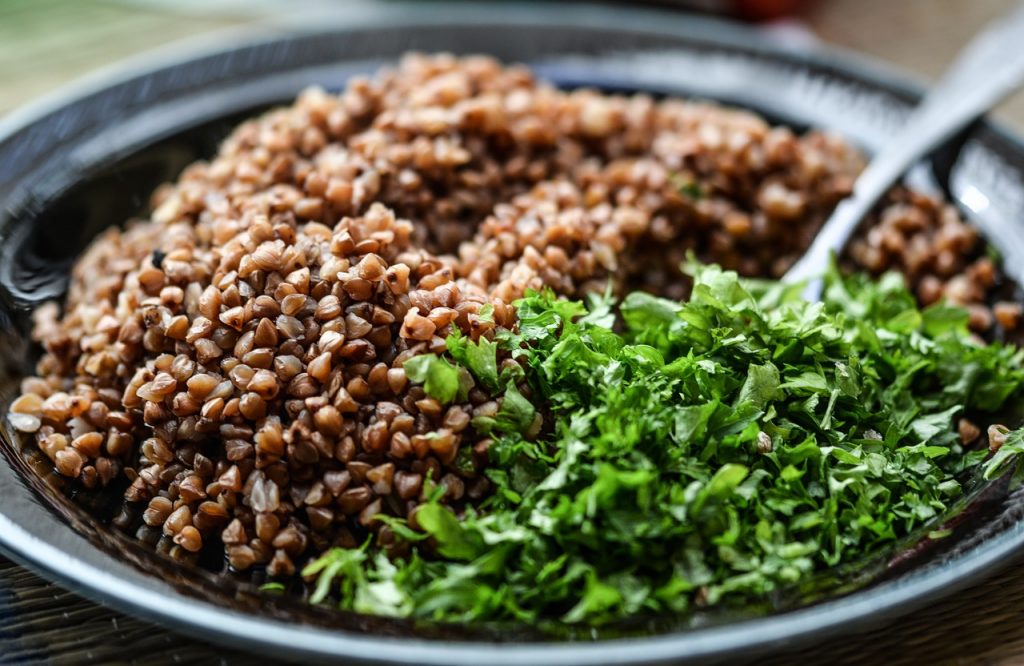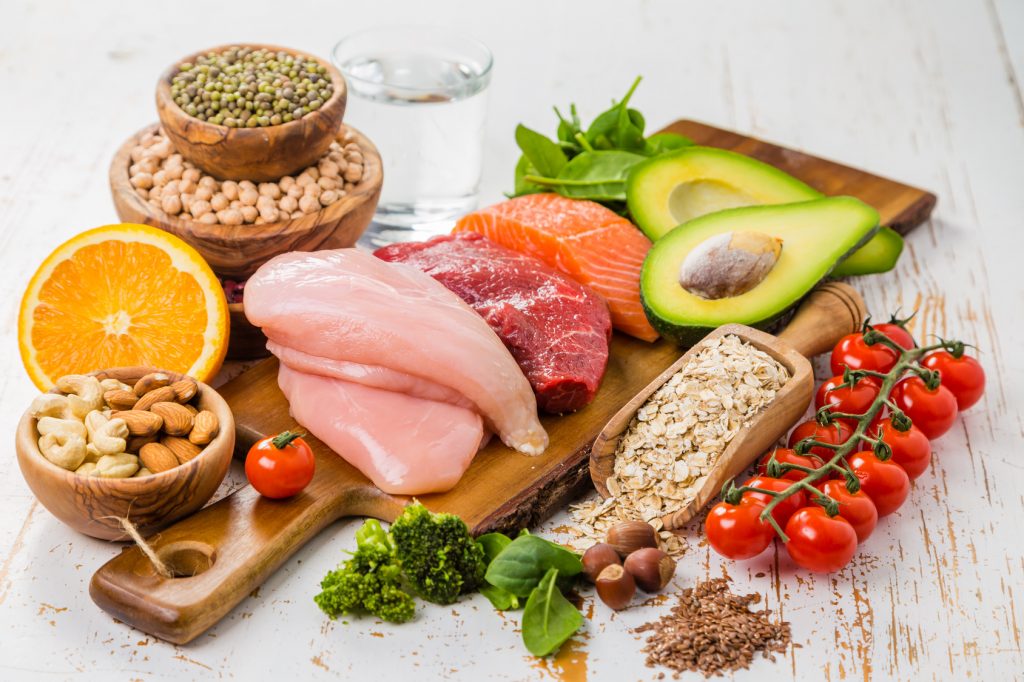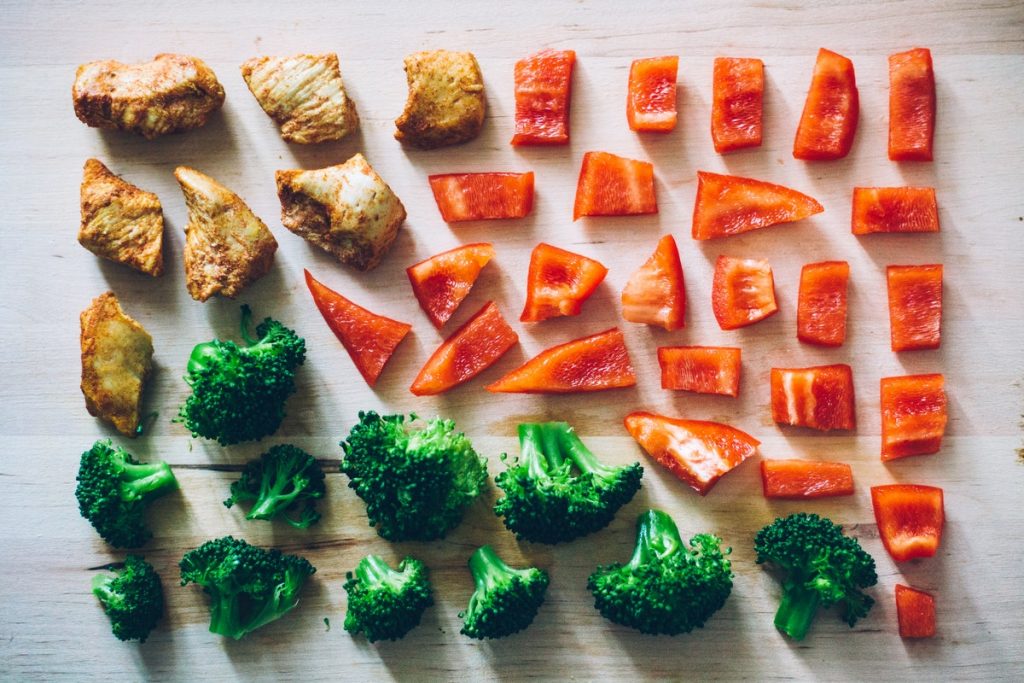
Table – calories, carbs and glycemic index
A lot of recommendations suggest that there is not an ideal percentage of calories or amount of carbohydrates for all…

The treatment of diabetes should be comprehensive and, in addition to drug or insulin therapy, include appropriate dietary management. Results of research studies show that a diabetes diet in patients already diagnosed with the disease can reduce glucose, glycated hemoglobin, serum cholesterol, as well as lower blood pressure.
Energy value of the diet in diabetes should be determined individually on the basis of such parameters as age, gender, body weight, height, and the level of physical activity. Daily energy needs should be divided into 4-6 meals, eaten at fixed times. It is advisable to maintain a relatively constant number of carbohydrates and calories in individual meals. In overweight and obese people, the basis for achieving metabolic control of the disease is weight loss. For this reason, for people with excess weight, a diet with an energy deficit of 500-1000 kcal / day is recommended.

Carbohydrates should constitute about 45% of the energy reguirement of the diet. The diet for diabetics should contain especially complex carbohydrates, rich in dietary fiber, with a low glycemic index. Therefore, the recommended sources of carbohydrates for diabetic patients include whole grains and vegetables.
For easier control of the amount of carbohydrates you consume, a carbohydrate unit system has been created. One carbohydrate unit (CU) is defined as the amount of product that provides 10 g of digestible carbohydrates.
Glycemic index is another concept for diabetic patients which is related to the carbohydrate content of meals. Glycemic index tells us how a person’s blood glucose rises after consuming a product compared to pure glucose.
Food products can be divided according to their glycemic index. The index can be:
Diabetic patients should consume mainly products with low and medium glycemic index. Products with a high glycemic index should be avoided.
The protein requirement of people with diabetes is 15-20% of the daily energy reguirement. Recommended sources of animal protein for diabetic patients include lean meat, poultry, fish, eggs and lean dairy products. Dry legumes are a good source of vegetable protein.

Fats should provide 25-40% of the energy requirement of the diet. Consumption of animal fats should be particularly limited because saturated fatty acids which they contain have an adverse effect on the increase in serum cholesterol and may increase the risk of developing cardiovascular disease. The main source of saturated fat is lard, fat, tallow, bacon, butter, fatty meats and full-fat dairy products. When it comes to plant products, saturated fatty acids are found in coconut and palm oil. Monounsaturated fatty acids should dominate in the diet of people with diabetes. Vegetable oils are especially high in them, e.g. olive oil and rapeseed oil. The remaining amount of fat in the diet should be polyunsaturated fatty acids.
The main sources of omega-6 fatty acids are sunflower oil, grape seed oil, and evening primrose oil. The best sources of omega-3 fatty acids are mainly oily sea fish, such as: salmon, halibut, herring, sardines, mackerel, as well as linseed oil and walnut oil.
We should remember that a large amount of fat in the diet can also result in an increase of glycemia a few hours after a meal. In order to help patients treated with personal insulin pumps with recalculating the insulin dose depending on the amount of protein and fat in a meal, a system of fat-protein units (FPU) was developed. One fat-protein unit is defined as the amount of product that provides 100 kcal derived from protein and fat.

Vitamins and minerals in the diet of a diabetic patient should mainly come from natural food. In most cases, a balanced diet allows you to meet the demand for these ingredients without the need for supplementation. The exception is vitamin D. In this case, diet alone is not enough to cover the daily requirement because few foods are rich in this vitamin and it can only be found in oily sea fish.
Dietary management is an integral part of diabetes treatment. A properly balanced diet can help normalize glucose levels, slow down the development of the disease, reduce the risk of developing complications associated with diabetes, as well as improve the quality of life and improve overall well-being.

 Read more
Read more

A lot of recommendations suggest that there is not an ideal percentage of calories or amount of carbohydrates for all…

The level of blood glucose is influenced by both the amount of carbohydrates consumed and their type, and that’s where…

Metabolic control of diabetes is influenced not only by the treatment method and lifestyle changes, but also by the patient’s…

What causes type 2 diabetes Diabetes belongs to the group of metabolic diseases characterized by hyperglycemia, i.e. too high blood…

Type 1 diabetes: what is it? Type 1 diabetes is called in Latin: Diabetes mellitus typi 1, previously described as…

It has been assumed that glycemic index (GI) for glucose is 100 and other products refer to this value. It…
